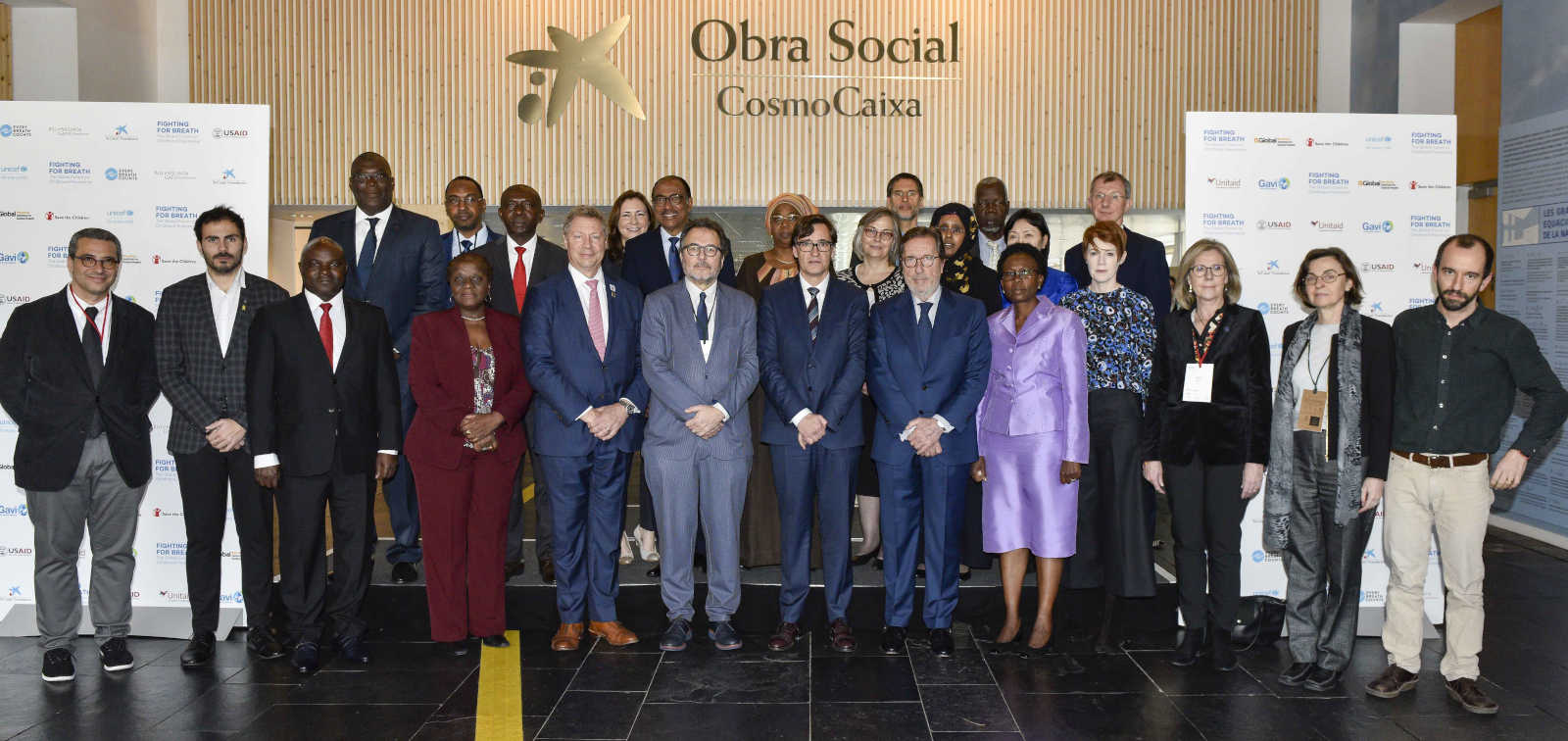Nine Million Children Could Die in a Decade Unless World Acts on Pneumonia, Leading Agencies Warn
Today starts the first ever global forum on childhood pneumonia in Barcelona, organised by the Barcelona Institute for Global Health together with eight international entities
27.01.2020
Boosting efforts to fight pneumonia could avert nearly 9 million child deaths from pneumonia and other major diseases, a new analysis has found ahead of the Global Forum on Childhood Pneumonia , which takes places between 29 and 31 January in Barcelona.
The event is the first ever global forum on childhood pneumonia and it is organised by nine leading organisations in the fields of health and childhood: the Barcelona Institute for Global Health (ISGlobal), a centre supported by ”la Caixa”; Save the Children, UNICEF, Every Breath Counts, ”la Caixa” Foundation, the Bill and Melinda Gates Foundation, USAID, Unitaid and Gavi.
According to a modelling by Johns Hopkins University, scaling up pneumonia treatment and prevention services can save the lives of 3.2 million children under the age of five . It would also create ‘a ripple effect’ that would prevent 5.7 million extra child deaths from other major childhood diseases at the same time, underscoring the need for integrated health services.
Pneumonia is caused by bacteria, viruses or fungi, and leaves children fighting for breath as their lungs fill with pus and fluid. It is the biggest single killer of children, claiming the lives of 800,000 children last year, or 1 child every 39 seconds. Although some types of pneumonia can be prevented with vaccines and can be easily treated with low-cost antibiotics if properly diagnosed, tens of millions of children are still unvaccinated – and one in three children with symptoms do not receive essential medical care.
Child deaths from pneumonia are concentrated in the world’s poorest countries and it is the most deprived and marginalised children who suffer the most. Forecasts show 6.3 million children under the age of five could die from pneumonia between 2020 and 2030, on current trends. Over the next decade, deaths are likely to be highest in Nigeria (1.4 million), India (880,000), the Democratic Republic of Congo (350,000) and Ethiopia (280,000).
Health interventions aimed at improving nutrition, providing antibiotics and increasing vaccine coverage, boosting breastfeeding rates – key measures that reduce the risk of children dying from pneumonia – would also prevent millions of child deaths from diseases like diarrhoea (2.1 million), sepsis (1.3 million), and measles (280,000).
“The number of lives that could be saved is potentially far higher as the modelling did not take account of factors like availability of medical oxygen, or action to reduce levels of air pollution, a major risk factor for pneumonia”, says Kevin Watkins, Chief Executive of Save the Children. These results show what is possible. It would be morally indefensible to stand and allow millions of children continue to die for want of vaccines, affordable antibiotics and routine oxygen treatment.”
According to the Executive Director of UNICEF, Henrietta Fore, “if we are serious about saving the lives of children, we have to get serious about fighting pneumonia. As the current coronavirus outbreak shows, this means improving timely detection and prevention. It means making the right diagnosis and prescribing the right treatment. It also means addressing the major causes of pneumonia deaths like malnutrition, lack of access to vaccines and antibiotics, and tackling the more difficult challenge of air pollution.”
Outdoor air pollution contributes to 17.5 per cent – or nearly one in five – pneumonia deaths among children under five worldwide, according to a study by the Institute for Health Metrics and Evaluation (IHME-GBD). Household pollution from the indoor use of solid cooking fuels contributes to an additional 195,000 (29.4 per cent) deaths.
Ninety-one per cent of the world’s population is breathing outdoor air that exceeds WHO standards. The scale of the air pollution challenge could potentially undermine the impact of scaling up pneumonia-related interventions.
Other causes of pneumonia deaths include malnutrition, and lack of access to vaccines and antibiotics. According to the Johns Hopkins modelling, of the total 8.9 million deaths from all causes that could be averted over the next decade, 3.9 million would be the result of greater efforts to reduce levels of malnutrition alone.
On his behalf, the Research Professor at ISGlobal and Chair of the Global Forum on Childhood Pneumonia, Quique Bassat, has highlighted that "the disease that kills most children in the world cannot be neglected any longer in terms of its scarce global research funding. Research and innovation need to drive policy change, and lead the way for further decreases in pneumonia-attributable mortality."
“This analysis shows that collective action to protect children from pneumonia could really boost national efforts to achieve the SDG for child survival”, says Leith Greenslade, Co-ordinator of the Every Breath Counts Coalition. “Governments and international development agencies must act urgently to protect the most vulnerable children from malnutrition and exposure to air pollution, and ensure that they receive pneumonia-fighting vaccines and speedy diagnosis, child-friendly antibiotics and oxygen if they become sick. If they don’t, 9 million children’s lives are at stake.”
Finally, Seth Berkley, CEO of Gavi, the Vaccine Alliance, has concluded that “pneumococcal pneumonia is an easily preventable, often treatable disease – no parent should go through the agony of losing their child to this disease. Over the past decade we have made progress in boosting the number of children receiving lifesaving pneumococcal vaccine and it is vital that we keep up these efforts to protect the next generation against this deadly disease. Gavi’s donor pledging conference in June will offer the international community the chance to help us do so.”



